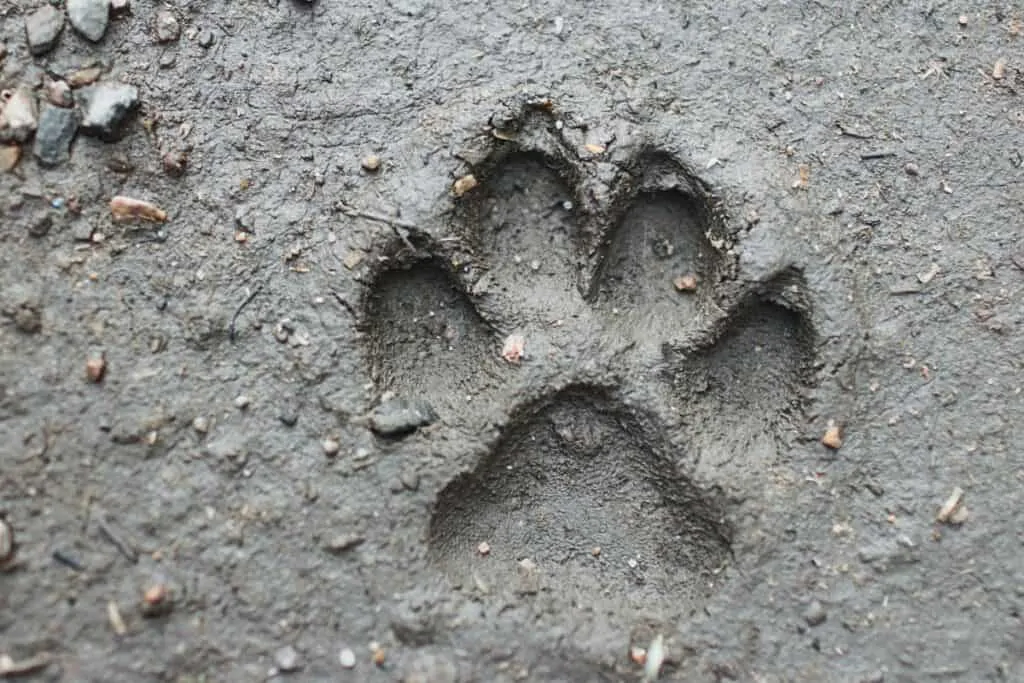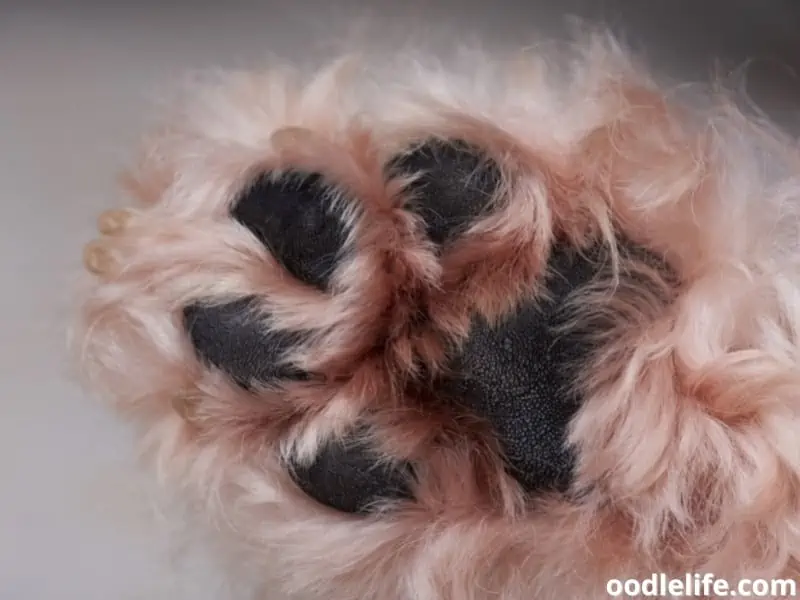Why Are My Dog’s Paws Pink?
It’s easy to worry about our furry companions, and every oddity sparks some level of concern. Unusual coloring is certainly one of those triggers, especially when it’s your pup’s paws.
If you’re wondering why your dog’s paws are pink, we’ve got the answers you need to ease your concerns. Read on to learn everything you need to know!

Paw Pad Basics
Let’s start with a little basic information about paw pads that helps explain the coloration or discoloration. Paw pads are mostly fatty tissues covered in thick skin, but they also have elastic fibers.
Your dog relies on paw pads for many things, including insulation, stability, and traction. The elasticity and fat layers also provide some shock absorption to reduce strain on the legs, knees, and hips.

What Color Should a Dog’s Paws Be?
Newborn pups have pink paw pads that change color with use, which means a lot of walking. Over their first six months, a puppy’s paw pads gradually turn black from running around. The blackened areas represent tougher layers of skin to protect the tender, sensitive pink layers.
The process isn’t always comfortable for your furry companion. Think of it like developing calluses on your hands, it takes a lot of time and effort to build up resistance.
Of course, every dog is different, and a lot depends on the surfaces they walk and run on. Grass is easier on paw pads than cement or gravel.
Many dogs always have some pink parts on their paws. The pink areas represent the most sensitive parts on their paw pads and the most susceptible to injury.

Causes and Treatments for Pink Paw Pads
So, why are my dog’s paws pink? If your furry companion isn’t a newborn pup, you might have some concerns about new pink patches or spots on their pads. There are a few possible explanations for the color change.
Burns or Blisters
Burns and blisters are common in dogs, especially after walking on extremely hot surfaces. Dog paw pads react much like human skin with swelling and blistering, giving them a pinkish color.
If your dog burns their paw pads, it’s important to have them rest and stay off their feet as much as possible. Burns that blister and break can quickly develop infections, so get your dog a veterinarian as soon as possible. Your vet will bandage the feet and prescribe antibiotics.
Allergic Reactions
You might think your dog chews everything, but obsessively gnawing or licking their feet is one of the most common signs of atopy in dogs. Atopy is an allergy to something in the environment that irritates your pup’s paws and leads to excessive licking.
Some grasses can trigger allergic reactions, so washing your dog’s feet after being outside is helpful. However, if it’s something in the air, a bath won’t fix it.
Treatment for dog allergies varies depending on the allergen, your vet, and your dog. Typically, you have three methods.
- Allergy shots gradually expose your dog to their triggers to reduce the effect.
- Medication to manage the symptoms, including pills, shots, and ointments.
- Special prescription shampoos can ease symptoms.
Some dogs require a combination of several treatments to manage the symptoms and reduce itching enough that they stop chewing on their feet.

Infections
Dogs can develop various infections in their paw pads. The most common are bacterial, but it’s possible to get a fungal infection.
Bacterial infections occur when there’s an imbalance in bacteria around the paw pads. It’s often tied to allergies, but not always. Localized skin infections, ingrown hairs, and swimming in certain water sources can trigger bacterial infections.
Treatment is typically antibiotics, soaking the paws, and possibly surgery.
Fungal infections are rarer but occur if a dog is exposed to something in the environment. Yeast infections can occur in conjunction with other conditions, like allergies. It typically causes a reddish or brownish discoloration and can have a discharge.
Dogs can also contract ringworm.
Only vets can diagnose a fungal infection and prescribe appropriate treatment, typically medication. The good news is that it doesn’t typically take long to recover from a fungal infection.

Cysts
Cysts are pockets of fluid that can develop anywhere on the paw and lead to discoloration of the pads. You might notice your dog limping to avoid pressing on that paw. It’s important to take your dog to the vet to have the area biopsied and treated according to the diagnosis.
Obsessive-Compulsive Disorder
Dogs can get bored and depressed, and yes, they can have OCD as well. Dog OCD is more common in some breeds than others, but the result is extreme behavior, including licking or gnawing at their paw pads.
Diagnosing OCD is challenging since it’s not easy to figure out what triggers a dog. Some researchers are studying the phenomenon, and there has been some success in treating it similarly to humans. Dogs typically take medication and work with animal behaviorists to redirect the repetitive behaviors.
Tips for Healthy Paw Pads
While you can’t prevent every misstep that comes your pet’s way, there are a few things you can do to keep those paw pads healthy.
- Keep your dog’s nails neatly trimmed so that they are no longer than the toe pad.
- Don’t let your dog walk on surfaces that you can’t hold your hand over for at least ten seconds.
- Avoid areas with foxtails, broken glass, or other debris.
- Treat paw pads that look dry or cracked with a dog-safe cream or Vaseline. Rub it in well so that your dog doesn’t lick it off.
- Try using an antibacterial shampoo for baths to help remove unwanted particles and debris that could trigger infections and allergies.
Finally, it’s a good idea to rinse and thoroughly dry your pup’s feet when they come inside. It’s a little extra work, but it can save your pup’s paws and keep their pads healthy!

Final Thoughts
Now you know why your dog’s paws are pink and what to do about it. While your pup might always have some pink patches on their pads, it’s a good idea to monitor them for changes.
Some of the above conditions can develop quickly and require attention from a vet, so it’s best to catch them as soon as possible.
